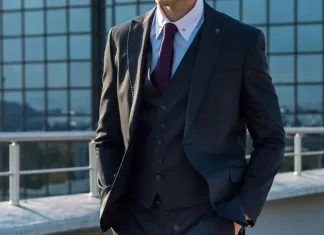
First Published: 3rd November 2023, written by Olivia Doonan | Last Updated on 24th April 2024 | Reviewed and Edited by Chloe Safilo
As an ever-evolving art form, fashion reflects societal changes, cultural shifts and individual expressions. While we often focus on the outer layers of clothing, we cannot undermine what is worn beneath, which impacts the entire look.
A foundation garment provides support, shaping, and coverage to the body, usually undergarments that enhance or temporarily change the shape of the wearer’s body. This includes bras, shapewear, breathable bamboo women underwear collections and a wide range of other undergarments, profoundly impact how we perceive and engage with fashion trends.
This article explores the intricate relationship between foundational garments and fashion, highlighting their influence on everything from silhouettes to sustainability.

A Historical Perspective
To understand the influence of foundational garments on fashion trends, we must first look back in time. Throughout history, foundational wear has played a significant role in shaping the way we dress. For instance, corsets, with their ability to create an hourglass figure, influenced the designs of dresses and gowns in the Victorian era. As societal norms and fashion ideals evolved, so did the function and design of foundational garments like a petticoat to give the skirt or dress the desired attractive shape.
The Role of Foundational Garments
Foundational garments are essential in women’s fashion as they provide the necessary support, shaping and functionality to enhance the overall look and fit of clothing. They not only improve comfort but also help women feel more confident and empowered in their outfits.
Here are some of their important roles:
Defining Silhouettes
One of the most overt ways foundational garments impact fashion is by shaping the body’s silhouette. Once constricting and essential, corsets and waist cinchers have given way to modern smoothing shapewear that smooths and contours like high waist knickers, a bodysuit, or panty girdle for tummy control. These pieces enable clothing to drape differently, influencing the overall aesthetic of fashion trends.
A Confidence Boost
Fashion is intrinsically linked to confidence. The right foundational garments can have a transformative effect on an individual’s self-assurance, be it an underwire bra or fitted shapewear to sculpt the body to appear slimmer. Well-fitted bras and body shape wear provide both physical comfort and psychological reassurance. When people feel comfortable in their skin, they are more likely to embrace fashion trends and explore new styles, ultimately influencing the direction of fashion.
Behind the Scenes
The fashion industry relies heavily on foundational garments to bring designs to life. Runway shows, red-carpet events and photoshoots depend on these pieces to create a flawless and polished appearance. Stylists, designers and models collaborate to ensure that every outfit fits perfectly. To do this, they lean on well-constructed bras and supportive undergarments.

Innovations To Adapt in Foundational Garments
As fashion trends evolve, so do foundational garments. Technological advancements and innovative materials have given rise to foundational wear that complements contemporary styles. There has been a shit attributed to many factors, including:
A Shift to Eco-Friendly Choices
In recent years, sustainability has become a prominent theme in fashion. Consumers and designers alike are seeking eco-friendly materials and ethical practices. Foundational wear, too, has been influenced by this wave. Eco-conscious consumers are increasingly drawn to underwear made from sustainable materials such as bamboo textiles. This material, for instance, comes from a bamboo plant, which grows with little water consumption and requires fewer pesticides in nature. This minimises the impact on our environment and the climate.
Therefore, bamboo has become a go-to material for clothing for everyone whose mind is on sustainability. This is just one of the eco-friendly materials, there are others as well. This shift towards sustainability is a testament to the interconnectedness of foundational garments and broader fashion trends, reflecting a collective desire for responsible choices.
Cultural Influence
Cultural diversity has significantly influenced the design and choice of foundational garments. Different cultures have unique preferences for colours, fabrics and styles. These preferences influence foundational wear and impact the broader fashion world, contributing to the rich tapestry of global fashion trends.
Inclusivity and Body Positivity
The fashion industry has experienced a profound shift towards inclusivity and body positivity for plus size women. And this is so great, speaking as a woman often told I’m be more attractive if I lost a few pounds.
This transformation is reflected in the development of foundational garments that cater to a broader range of curvy body types. These garments encourage individuals to embrace their unique shapes and sizes, promoting empowerment. This shift is not confined to foundational wear alone; it extends to the fashion trends that celebrate individuality.

Summing Up
Foundational garments are not mere underpinnings; they are the often-unseen architects of fashion trends. These garments have historically defined silhouettes, boosted confidence and adapted to the ever-changing fashion landscape. As foundational garments continue to evolve in response to cultural, social and technological shifts, they remain a cornerstone in the development of fashion trends.

















































